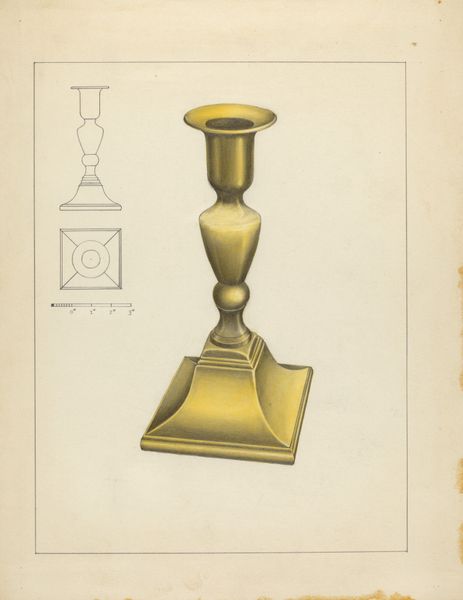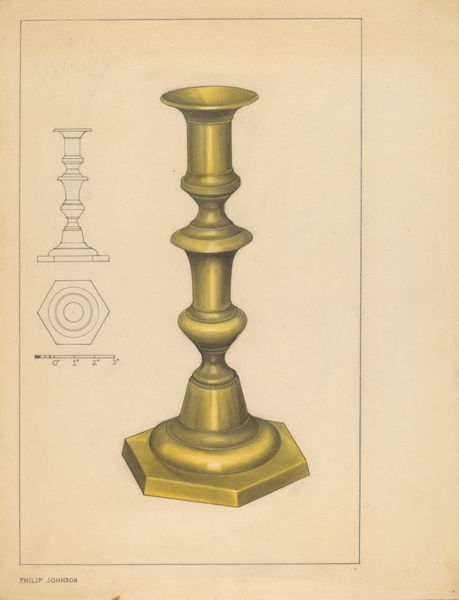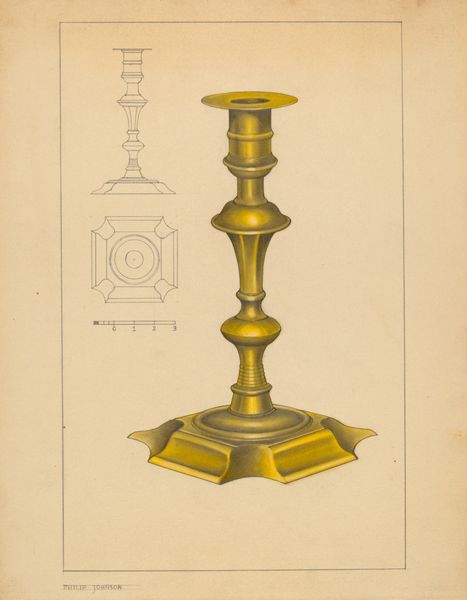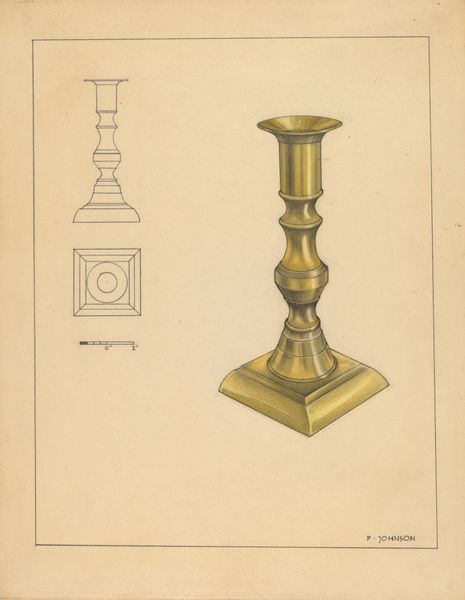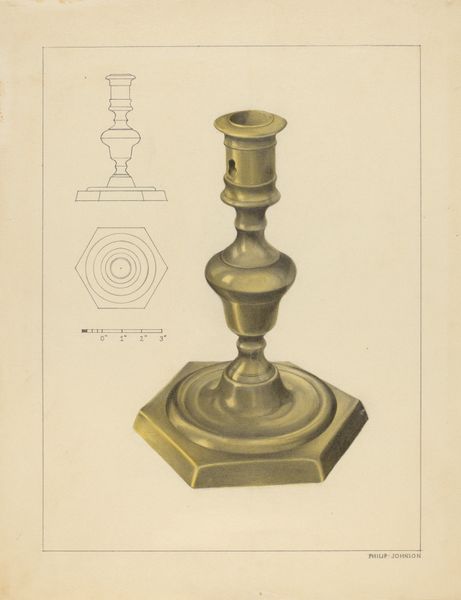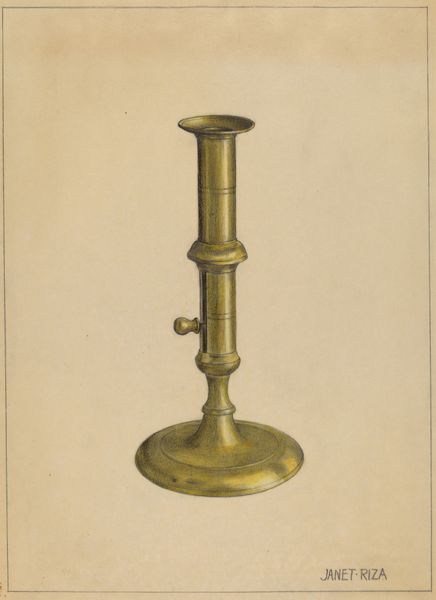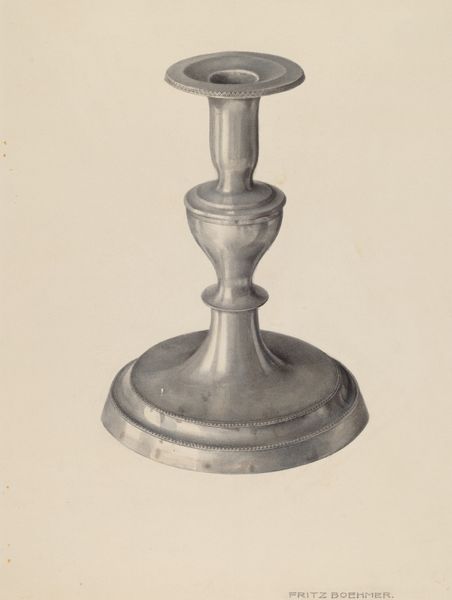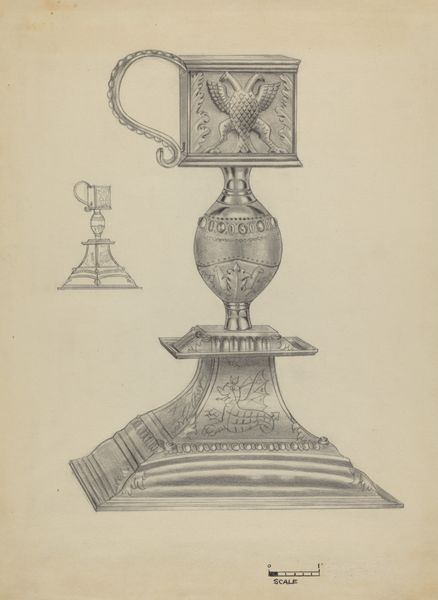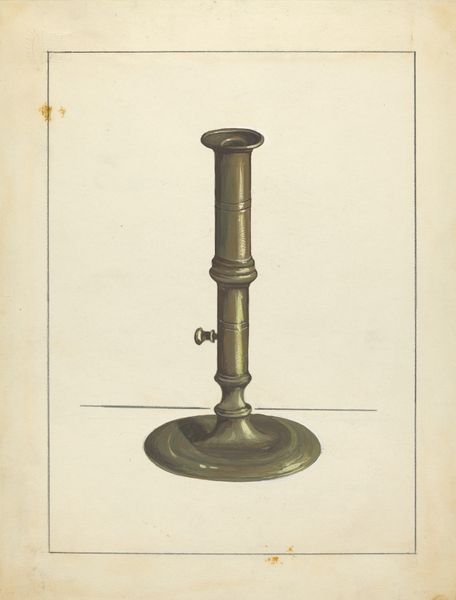
drawing, metal
#
drawing
#
metal
#
academic-art
Dimensions: overall: 29 x 23 cm (11 7/16 x 9 1/16 in.) Original IAD Object: 6 1/4" high
Copyright: National Gallery of Art: CC0 1.0
Editor: So, we're looking at a drawing of a metal candlestick, circa 1937, by Philip Johnson. I'm struck by how technical it seems. It almost feels like a blueprint with the precise linework and even a little scale included. What strikes you when you look at this piece? Curator: It's interesting you picked up on that "blueprint" feeling. This drawing highlights a tension often present in design and architecture – the move to democratize taste. Johnson, with his elite background, designing something like a candlestick - is that an attempt to engage a broader audience? Is he taking something traditionally seen as high art or luxury and making it accessible through design? Editor: That's fascinating, I hadn’t considered the social implications of the design itself. The precise rendering, the clean lines... does that connect to the Machine Age aesthetics that were emerging at the time? Curator: Absolutely! Think about the Bauhaus movement's impact on design at this period. These influences were making design less ornamental. How does this aesthetic align or perhaps misalign, with established ideas within American museums and galleries? Was there resistance to such seemingly 'industrial' designs finding a place among traditional art forms? Editor: So, the drawing speaks not only about a physical object, but also about larger cultural shifts happening in art and design at the time. Curator: Precisely. Consider how institutions influence which forms are embraced, validated, and ultimately, deemed “art.” Editor: This makes me rethink my initial impression. It's more than just a technical drawing, it is an embodiment of democratized art that reflects the changing social values during the machine age. Curator: Exactly! And, in considering Philip Johnson, we gain an insight on what socio-economic influence and class has on accessibility of artistic mediums and artwork. Editor: That is very helpful! Thank you for shedding some light on the political dimensions.
Comments
No comments
Be the first to comment and join the conversation on the ultimate creative platform.
